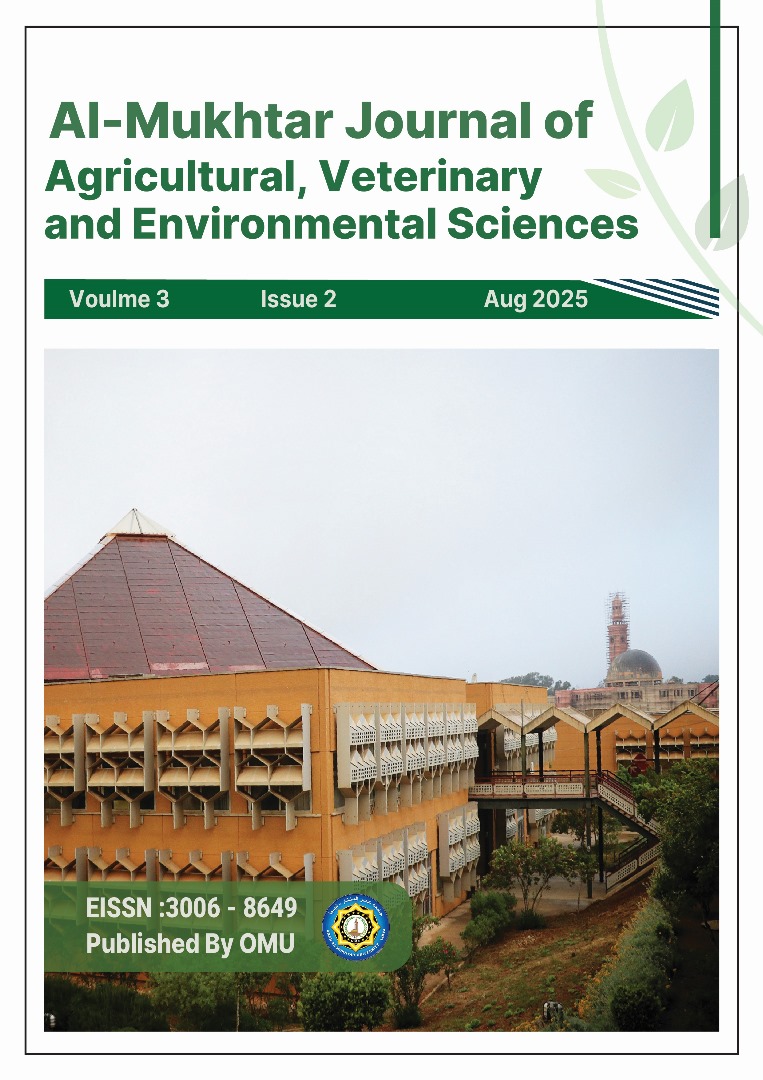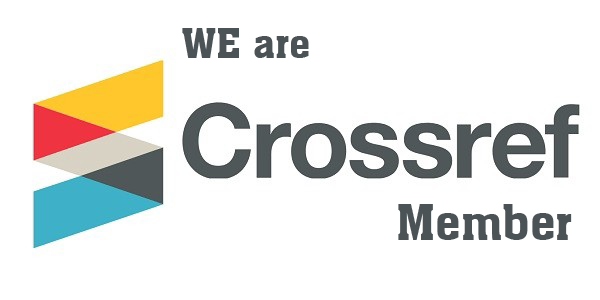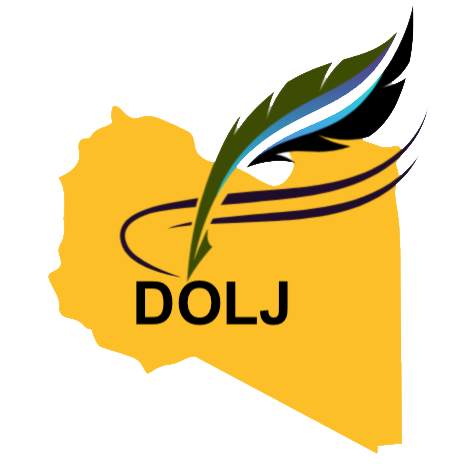Morphological Characterization of Libyan Barbary Sheep
DOI:
https://doi.org/10.54172/xhyn3e85Abstract
The objective of this study was to morphometric characterize the Libyan Barbary sheep to determine if sheep located in eastern, western, central and southern regions belong to same population. Ten qualitative and eleven quantitative characteristics of 853 rams and 3008 ewes from the above mentioned regions were used for this study. The Libyan Barbary sheep are medium size sheep belong to the fat-tailed and carpet wool type, the coat mostly white in color. The overall mean of Head Length, Horn length, High at wither, Chest girth, Canon circumference, Body length, Ear length, staple length, Tail length, Teat length and Scrotum circumference were 11.9, 56.52, 72.65, 92.14, 8.33, 72.06, 13.92, 8.29, 42.55, 2.63 and 29.8 cm, respectively. Analysis of variance results showed that there is a significant effect of region and gender on the measurements. Variance components procedure resulted in all traits showing a high degree of intra-region (residual) variability. Head length, body length, Wither height and chest girth have more discriminant power than the others between sub-populations. The all pairwise distances between regions were highly significant (P < 0.001), with distances ranged between 0.8 and 3.62, and the canonical discriminant analyses showed that the groups differ on the linear combination of the measured variables. Although the Libyan Barbary Sheep under study is geographically dispersed, they exhibit remarkable phenotypic similarities, and they may belong to the same population. Molecular genetic analysis is required to verify the phenotypic description in future studies.
References
1. ACSAD, 2018. Atlas of agriculture animals in Arab countries. League of Arab state 2ed edition.
2. Ahtash, A., Hermas, S., Azaga, I. & Kurdi, A.(2010). Face color effects on growth rate of Libyan Barbary lambs. Egyptian Journal for sheep and goat sciences. Vol.1, No.1.
3. Animal Genetic Resources Committee (2020). A technical report – Ministry of Agriculture and Animal wealth, Libya.
4. ARC /ICARDA, (2008). Phenotypic and molecular characterization of small ruminant breeds in Libya – field guide. Agriculture research center – Libya and International center for Agricultural research in the Dry Areas collaborative program. https://www.researchgate.net/publication/304490110
5. Baneh, H., & Hafezian, S. H. (2009). Effect of environmental factor on growth traits in Ghezel sheep. Afric. J. Biotech. 8, 2903–2907.
6. Dekhili, M. (2014). A morphometric study of sheep reared in north-east Algerian. Arch. Zootec. 63 (244): 623-631.
7. Delgado, J. V., Barba, C., Camacho, M. E., Sereno F. T. P. S., Martinez, A., & Vega-Pla J. L. (2001). Livestock characterization in Spain. Animal Genetics Resources Information, 29:7–18.
8. FAO, (1999). AGRI. Paper No. 25, Rome, Italy.
9. FAO, (2006). The Economic Efficiency of Cereals Production in Libya. A Technical Report.
10. FAO, (2012). Phenotypic characterization of animal genetic resources. FAO Animal Production and Health Guidelines No. 11. Rome.
11. Hailua, A., Amine, M., Tesfalem, A., Abraham, A., Seble, S., & Semere, T. (2020). Phenotypic characterization of sheep populations in Tahtay Maichew district, Northern Ethiopia.
12. Ihtash, A. M., & Magid, A. F. (1999). Environmental factors affecting weaning weight of Libyan Barbary lambs under range conditions. Libyan J. Agr. Vol.14.
13. Kijas, J. W., Lenstra, J. A., Hayes, B., Boitard, S., Porto Neto, L. R., San Cristobal, M., Servin, B., McCulloch, R., Whan, V., & Gietzen, K. (2021). Genome-wide analysis of the world’s sheep breeds reveals high levels of historic mixture and strong recent selection. Plos Bio. 10, 1–14.
14. Lanari, MR., Taddeo, H., Domingo, E., Centeno, MP., & Gallo L. (2003). Phenotypic differentiation of exterior traits in local Criollo goat population in Patagonia (Argentina). Archiv Tierzucht Dummerstorf. 46:347–356.
15. Magid, A. F., Zaied, A. A., & Sheraha, A. M. (1992).The Libyan Barbary Sheep. I . reproductive traits. Libyan. J. Agr. 13:5.
16. Magid, A. F., & Mursy, M. A. (1992). Productivity of the Libyan Barbary sheep in Relation to face color. Libyan J. Agr. 13:23-31.
17. SAS, (2002). User's guide: Statistics, version 9.1, SAS Ins., Inc., Cary., NC, USA.
18. Yakubu, A., Salako, A. E., Imumorin, I. G., Ige, A. O., & Akinyemi, M. O. (2010). Discriminant analysis of morphometric differentiation in the West African Dwarf and Red Sokoto goats. South Afric. J. Anim. Sci., 40: 381–387.
Downloads
Published
Issue
Section
License
Copyright (c) 2025 Abdulkarim Ahtash, F. M. Abousaq, M. M. Edahmani, H. Agoob, O. K. Alsibae, I. Ibrahim, A. Shiba, K. M. Abdulkarim, A. M. Targy, A. A. Tarhuni, H. A. Alfaleedni, M.A. Ashteba, A. Mahmod, A. Eltashani, E. Zaatot, S. A. Shaykh, M. H. Abounouwarah, N. A. Aboubareeq (Author)

This work is licensed under a Creative Commons Attribution-NonCommercial 4.0 International License.













